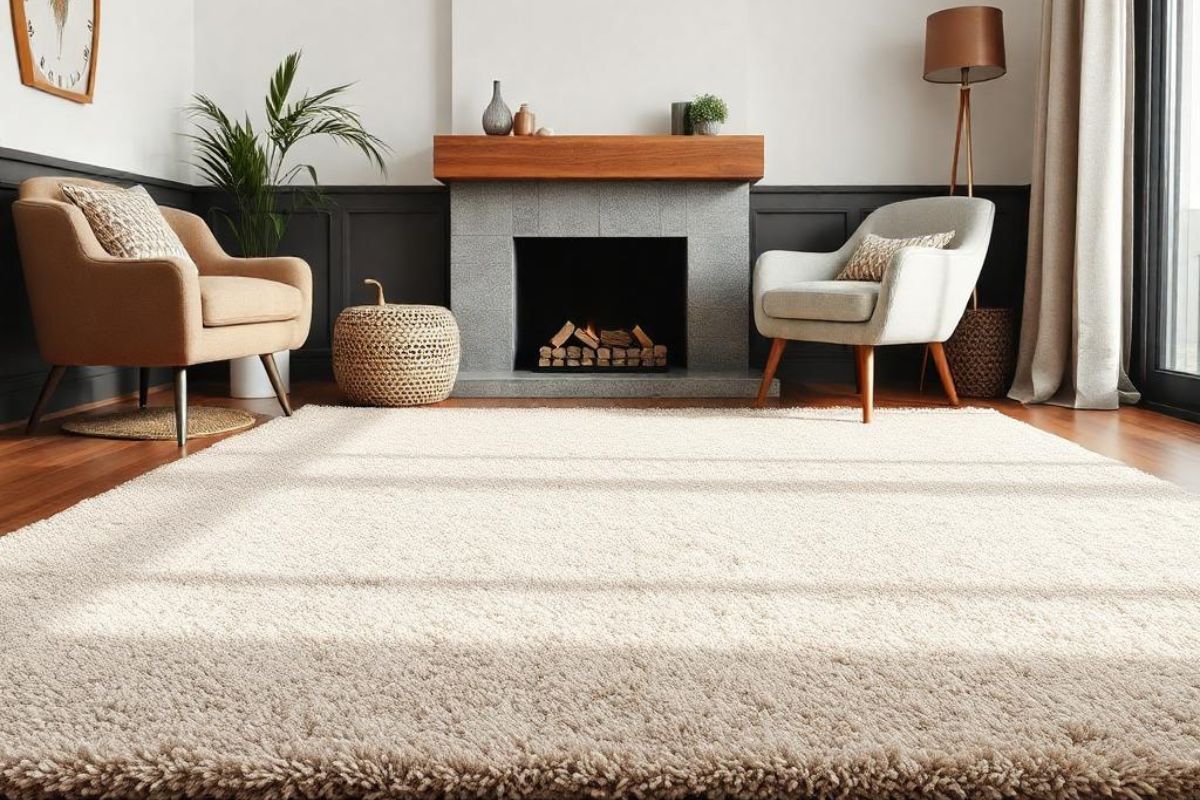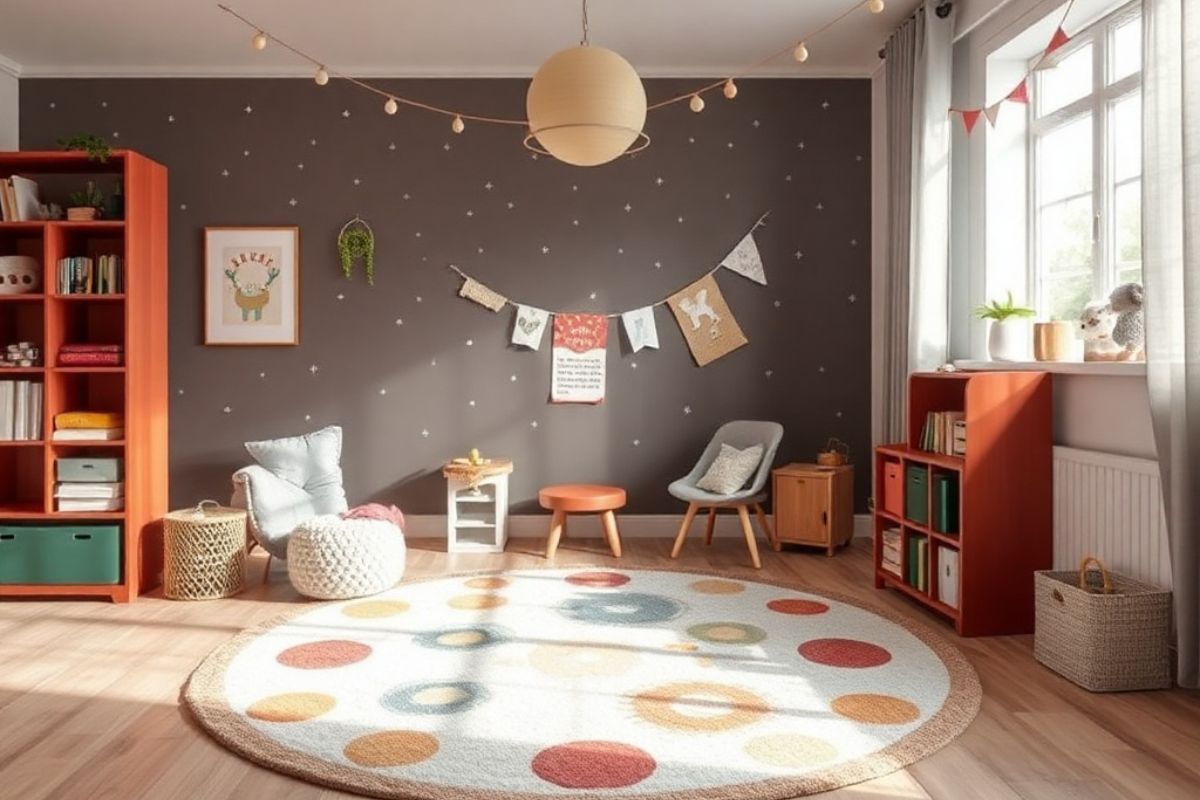How to Rip Up Carpet: DIY Removal Made Easy
.jpg)
To rip up carpet yourself, gather tools like a utility knife, pry bar, and knee pads. Clear the room of furniture and trim, then start at a corner to pull up the carpet. Cut as you go, rolling it up for easy handling. Next, remove the padding, checking for staples. Clean the subfloor and dispose of everything responsibly. You’ll also want to explore replacement flooring options that suit your style and budget—keep going for more details!
- Clear the room of all furniture and remove baseboards to ensure unobstructed access to the carpet.
- Start at a corner, using a utility knife to cut the carpet backing and begin lifting it away from the floor.
- Roll the carpet as you remove it, and be cautious of any staples or nails that may be present.
- After removing the carpet, also take out the padding, cutting around any staples or adhesives as necessary.
- Clean the subfloor thoroughly and check local disposal guidelines for recycling options for the old carpet.
Gather Your Tools and Materials
Before you plunge into ripping up your carpet, it’s vital to gather the right tools and materials to make the job easier. Start with a utility knife for cutting through the carpet. You'll also need a pry bar or a carpet puller to help lift the carpet away from the floor. Having knee pads on hand will protect your knees as you work on the ground. Don’t forget a pair of heavy-duty gloves to safeguard your hands. A trash bag or container is essential for disposing of old carpet remnants. Finally, make sure you have a vacuum cleaner ready for cleaning up any debris. With these tools in your arsenal, you'll be well-prepared for a smooth carpet removal process.
Prepare the Room for Carpet Removal
Once you've gathered your tools, it’s time to prepare the room for carpet removal. Start by clearing the space of all furniture and items that might obstruct your work. This not only gives you room to maneuver but also protects your belongings from damage. Next, remove any baseboards or trim that might interfere with the carpet removal process. If your carpet has staples or tacks, inspect the edges and be ready to tackle those later. Finally, make sure the room is well-ventilated; open windows or doors to allow for airflow. Taking these steps will make your carpet removal experience smoother and more efficient, setting you up for success as you begin your project.
Start at the Corner: Removing the Carpet
To effectively remove the carpet, start at a corner of the room, where you can easily lift the edge. Use a utility knife to carefully cut through the carpet backing, making sure to slice away from your body for safety. Once you've made a small cut, grab the carpet and gently pull it away from the floor. If it resists, use your knife to cut along the seam or tack strips. Work your way along the edge, continuing to pull and cut as needed. Be cautious of any staples or nails holding the carpet down. Roll the carpet as you go to keep your workspace tidy. This method makes it easier to manage the removal process without unnecessary hassle.
Take Out the Carpet Padding
Now that you've removed the carpet, it’s time to tackle the carpet padding underneath. Start by inspecting the padding for any staples or adhesives that might be holding it in place. If you find any, use a utility knife to cut around them carefully. Then, grab a corner of the padding and pull it up gently. It should come off fairly easily, but if it resists, check for any remaining fasteners. Work your way across the room, pulling up strips of padding. If the padding tears, that's okay—just remove as much as you can. Once you've finished, make sure to clear away any debris and vacuum the subfloor. You'll want a clean surface for your next flooring project!

Remove Tack Strips and Staples
After clearing the carpet padding, the next step involves removing the tack strips and staples that secured the carpet in place. Begin by wearing gloves to protect your hands from sharp edges. Use a pry bar or flathead screwdriver to gently lift the tack strips from the floor. They’re typically nailed down, so be cautious to avoid damaging the subfloor. Once you’ve removed the strips, focus on the staples. Grab a staple remover or pliers to pull them out, making sure to get every staple to leave the surface clean. If any staples break, use needle-nose pliers to extract the remnants. With the tack strips and staples gone, you’ll be ready for the next phase of your carpet removal project.
Clean Up and Dispose of Old Carpet
Once you've successfully removed the carpet and its underlay, it’s time to tackle the cleanup and disposal. Start by bundling the carpet into manageable sections. Use a utility knife to cut it into strips if needed. Next, gather any remaining debris, such as staples or tack strips, and dispose of them properly. Check your local guidelines for carpet disposal; some areas require special handling. You may be able to recycle the material at designated facilities. If you're renting a dumpster, make certain it’s large enough to accommodate your carpet. Finally, clean the area thoroughly to remove any dust or residue left behind. This guarantees a smooth shift for whatever flooring you plan to install next.
Explore Flooring Options for Replacement
With the old carpet removed and the area cleaned up, it’s time to contemplate your flooring options for replacement. Start by considering hardwood, which offers durability and timeless appeal. If you prefer a softer surface, laminate or vinyl can mimic wood at a lower cost and are easier to maintain. For a cozy feel, think about luxury vinyl tiles or carpet tiles, which are versatile and easy to install. If you’re looking for eco-friendly choices, bamboo or cork can add a unique touch while being sustainable. Don’t forget to factor in your lifestyle—high-traffic areas might benefit from more durable materials. Ultimately, choose a flooring option that fits your style, budget, and practical needs.
Conclusion
Now that you've successfully ripped up your carpet, it’s time to enjoy your fresh space. Take a moment to clean up any debris and properly dispose of the old materials. With the carpet gone, you can explore new flooring options that suit your style and needs. Whether you decide on hardwood, laminate, or tile, you’re one step closer to transforming your room. Happy renovating!









